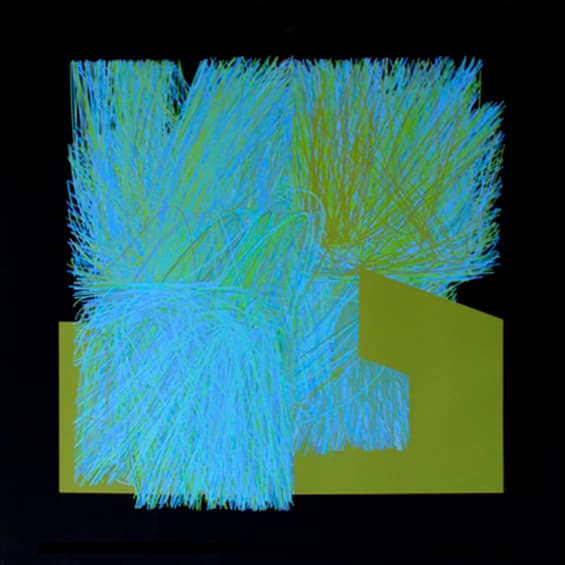2014 Joint Mathematics Meetings
Petronio Bendito
Artists
Petronio Bendito
Associate Professor of Visual Communication Design
Department of Art and Design, Purdue University
West Lafayette, Indiana, USA
Statement
Through my Computational Color Design research I develop algorithmic methods to produce color palettes for RGB and CMYK outputs. For the “Color Code, Algorithmic Lines” series I use a hybrid process of creation that combines mathematical and intuitive approaches for self-expression. I have found that color palettes generated from RGB planes and cuboids, despite being structurally simple, can produce sophisticated and expressive color palettes. Formalistically I orchestrate via color and shape visual solutions that propose a unified reading of extremes: balance and chaos; light and darkness; structure and spontaneity… I believe that procedural colors will play a major role in art and design color selection processes in the 21st Century.
Artworks

Color Code, Algorithmic Lines n.0078
24"x24"
Ink on canvas (digital printmaking)
2012

Color Code, Algorithmic Lines n. 0032
24"x24"
Ink on canvas (digital printmaking)
2012